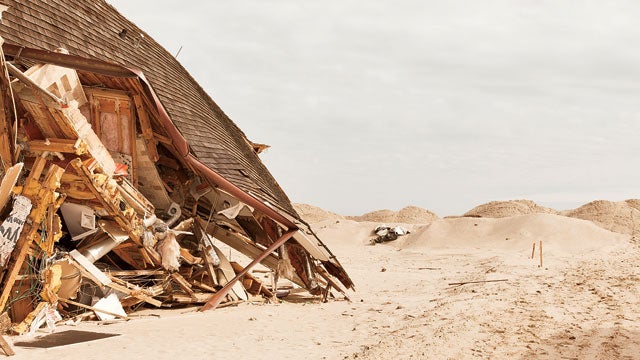IT TOOK THREE months for Congress to pass a bill aimed at helping East Coast residents cope with the impact of Sandy, and it will take at least eight times that long to spend it. Unlike many emergency-spending bills—which get loaded up with extraneous provisions, ranging from federal subsidies to tax breaks—the $50.5 billion measure approved in late January guides recovery efforts by designating funds to specific missions. But does that mean all the money is being spent wisely? Not entirely.
More: Down by the Seaside With Dr. Doom
Geologist Orrin Pilkey takes David Gessner on a tour of destruction.First, it’s worth noting that funding under the Disaster Relief Appropriations Act of 2013 is separate from the National Flood Insurance Program, which has now paid out $7.7 billion on 143,000 Sandy-related claims. Up and down the coast, almost anyone with a home who got federal flood insurance to obtain a mortgage has been compensated, at taxpayer expense.
For years the program has allowed Americans to live in flood-prone areas by subsidizing their insurance rates. Although lawmakers recently made some reforms, the program still makes it cheaper and easier for homeowners to live in regions that will face future disasters.
In terms of the relief bill itself, the government shaved $2.5 billion off the supplemental bill through the mandatory, across-the-board budget cuts known as sequestration. As a result, the measure’s grand total stands at $47,994,808,108. The money isn’t coming out all at once: as of August 1, the federal government had issued $9.1 billion, less than 19 percent of the total amount.
From early expenditures, it appears clear that the money has cushioned the storm’s blow for many East Coast residents. The Federal Emergency Management Administration provided disaster assistance to 182,800 individuals at a cost of more than $1.4 billion. (Of those receiving aid, much of which went to rental insurance and home repairs, 64 percent live in New York and 34 percent in New Jersey.) The Agriculture Department had spent $6.2 million by August 1, with the bulk of that going to purchase food for soup kitchens and food banks and a portion funding efforts by farmers and ranchers to rehabilitate and repair farmland, watersheds, and floodplains. Most of the measure’s biggest expenditures will take climate change into account but won’t radically alter coastal development.
The Department of Housing and Urban Development will provide $15.2 billion in Community Development Block Grants, meaning state and local officials will determine where the money winds up. The government has given out $5.4 bilion so far, which was more or less evenly divided among New York State, New York City, and New Jersey. So far it’s gone mainly to homeowners and small businesses doing repairs; later it will pay for everything from hardening the region’s grid to restoring dunes.
Bottom line: federal officials are prodding the states to take factors such as more severe storms and rising sea levels into account when rebuilding, but they will be rebuilding on the coasts all the same.
Juliet Eilperin is a White House correspondent for The Washington Post.


